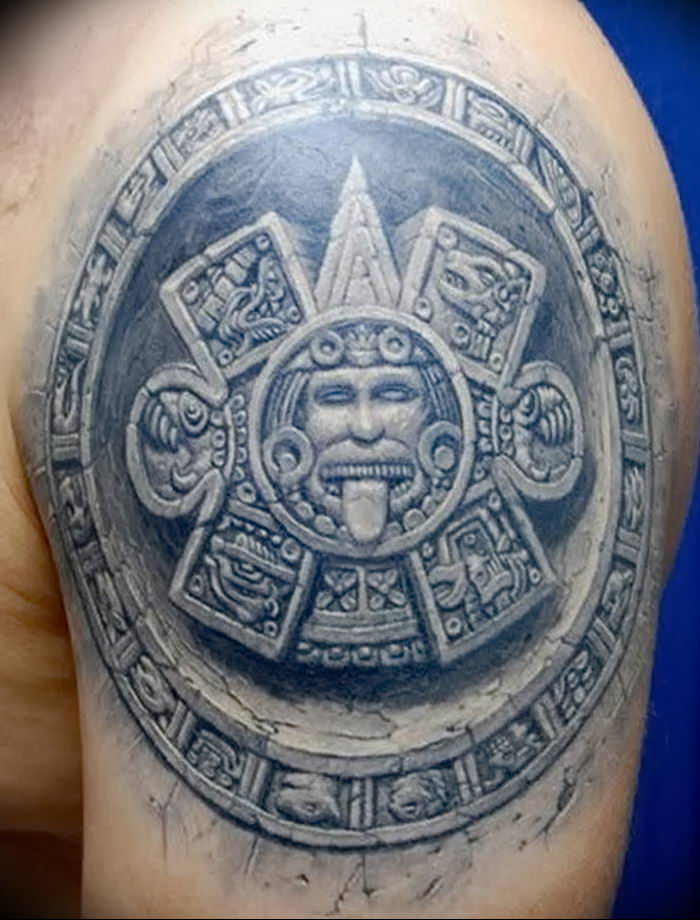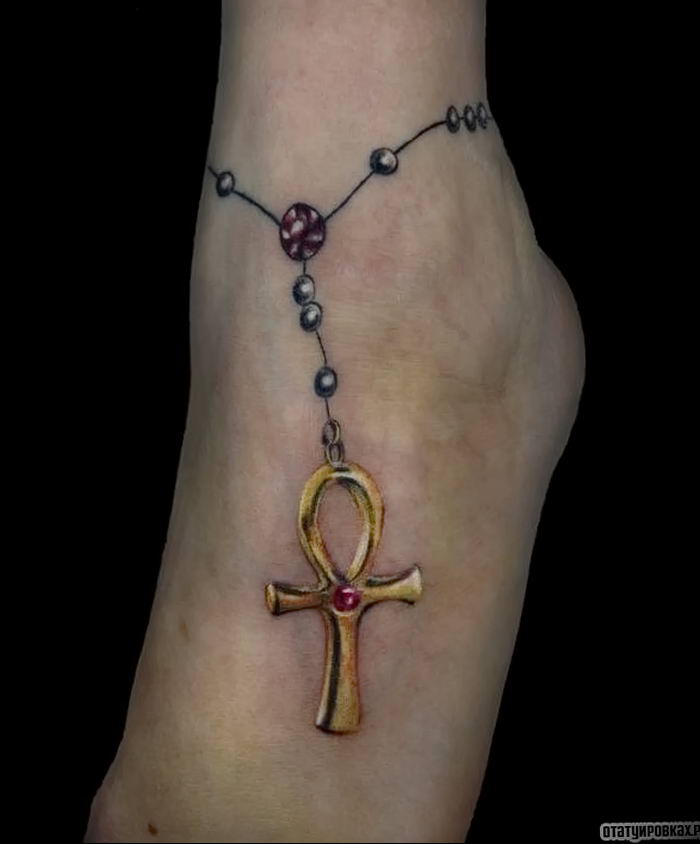In a world where tattoos have shifted from taboo to trend, there are many myths and misunderstandings surrounding this ancient practice. In our article, we reveal the truth about tattoos, delving into their history, cultural significance, and impact on personality. Join us on a journey through the world of tattoos to separate fact from fiction and understand how this art form shapes our modern society.
Tattoos have deep roots extending back centuries, always being a part of human culture and history. From ancient tribes to contemporary urban society, tattoos have been used to express oneself, signify social status, or even for healing purposes. Different civilizations have perceived tattoos differently: from sacred rituals among Native Americans and Polynesians to symbols of high status in the Japanese culture of samurai.
Despite their long history, many myths and misconceptions about tattoos persist. Contemporary society sometimes still sees tattoos as a sign of rebellion or even deviant behavior, despite their widespread popularity and recognition as an art form.
We aim to illuminate and dispel the most enduring myths about tattoos, providing readers with detailed information based on historical facts, cultural studies, and contemporary medical data. Our objectives include analyzing changes in the perception of tattoos across different cultural and historical contexts and presenting expert viewpoints on the most common prejudices.
The historical aspects will be examined, showing how the attitude towards tattoos has changed over time, and presenting modern perspectives on this form of self-expression. Through extensive analysis and discussion, the article strives to provide readers with a reasoned view of tattoos and their place in the modern world.
Tattoos are no longer perceived as extraordinary in the modern world; they have become part of the mainstream and are widespread among various layers of the population. From show business stars and athletes to business professionals and politicians, tattoos can now be seen everywhere. Studies show that young people, especially millennials and Generation Z, are much more tolerant of tattoos than previous generations, often using them as a means of self-expression and affirmation of individuality.
However, despite the expansion of acceptable boundaries and universal popularization, the stigma associated with tattoos still exists in some segments of society. In the past, tattoos were associated with marginal groups, sailors, rebels, or criminals. Such perceptions have significantly influenced attitudes towards tattooed individuals, and these stereotypes, while weakened, still persist.
Changes in the stigmatization of tattoos can be traced over the past decades. Where tattoos might have once been a barrier to employment or a cause for social condemnation, many companies are now revising their corporate policies to be more lenient towards employees’ appearances. This signals a shift in focus from appearance to professional qualities and work results.
Nevertheless, there is a flip side: certain professions and industries still maintain conservative views on tattoos. In sectors such as the financial sector, law enforcement, and some government structures, tattoos can still be seen as not conforming to corporate culture.
Today, society is at a crossroads: on one hand, the drive for individuality and freedom of expression encourages people to more broadly recognize tattoos; on the other, residual stereotypes and prejudices still influence social and professional interactions. It is important to note that tattoos are becoming more and more acceptable and understandable phenomena for the masses each year, reflecting a gradual change in social norms and standards.
Myth 1: Tattoos are unprofessional
In debunking myths about tattoos, the notion that tattoos are a barrier to professional success particularly stands out. Despite the resilience of this myth, modern realities and statistical data prove otherwise.
Many successful people, holding high positions in corporations, creative professions, and even politics, have tattoos. Examples include top managers of technology giants, world-renowned chefs, artists, and even sports coaches. These individuals have not only achieved success in their fields but also openly display their tattoos, which becomes part of their personal brand.
Recent studies also refute the idea that tattoos hinder career advancement. For instance, some statistical data suggest that having tattoos does not have a significant impact on the employment process. Moreover, in some industries, tattoos may even be seen as an advantage, especially in creative sectors where they can serve as a demonstration of creativity and uniqueness of the candidate.
It should be noted that some corporations and organizations still uphold a conservative dress code and may perceive tattoos as non-compliance with corporate standards. However, even within such structures, there is a gradual relaxation of rules and greater recognition of individuality among employees.
Thus, although the stigma to some extent remains, the widespread belief that tattoos can hinder professional success is gradually losing its relevance. Considering all aspects, it can be asserted that professionalism and competence are valued higher than appearance, which undermines the foundations of this myth.
Myth 2: Tattoos are harmful to health
There is a common belief that tattoos can be harmful to health; however, medical research and modern technologies have significantly altered this perspective. From a medical standpoint, the main concerns are associated with the risk of infections, allergic reactions to the ink, or improper aftercare. Nonetheless, by adhering to sterility rules and using quality materials, health risks are minimized.
Technologies in the tattoo field have advanced significantly in recent decades. Modern tattoo equipment allows for controlled penetration depth, reducing the pain and risk of skin damage. Tattoo inks now undergo stringent quality and safety controls, with many based on natural components, which reduces the likelihood of allergic reactions.
Professional tattoo parlors adhere to strict sanitary standards, including the use of disposable needles and gloves, regular sterilization of equipment, and staff training in hygiene basics. This ensures the procedure’s high safety and minimizes risks for clients.
Additionally, there is a wealth of literature and guides on aftercare for tattoos, which help prevent infections and ensure proper healing. With the right care and adherence to all recommendations, tattoos heal without complications, leaving no adverse health effects.
In conclusion, tattoos are a safe procedure when choosing a professional tattoo artist and following all safety precautions. The myth of tattoos being harmful to health is rooted in the past and does not correspond to the modern realities of the tattoo industry.
Myth 3: Tattoos cannot be removed
The myth that tattoos are permanent and cannot be removed was popular in the past, but it has lost its relevance today thanks to modern tattoo removal methods.
One of the most effective methods of tattoo removal is laser therapy. This process involves using high-intensity laser beams that penetrate the skin and break down the tattoo pigment, making it small enough for the body to eliminate naturally. Laser therapy may require several sessions, depending on the size, color, and age of the tattoo, but it can achieve significant lightening or complete removal of the design.
Another method is surgical removal, which may be preferable for small tattoos. During the procedure, the tattooed skin area is excised, and the wound is sutured. This direct and quick method of removing tattoos can leave scars, therefore it is less commonly used.
There are also less invasive methods, such as creams and peels that promise gradual lightening of tattoos, however, their effectiveness can vary greatly and is often not comparable to the results of laser therapy or surgical intervention.
It is important to note that tattoo removal is a procedure that requires a professional approach and may not be equally effective for all types of tattoos. Despite this, there are many real stories of people who have successfully removed unwanted tattoos. These stories often emphasize that tattoo removal became a new beginning for them or a way to let go of past mistakes.
These narratives, along with technological advancements, help debunk the myth of tattoo permanence and give people the understanding that a tattoo is not a lifetime commitment if they change their minds in the future.
Myth 4: Tattoos cause addiction
The common myth that tattoos can cause addiction is often discussed in public spaces. This belief seems logical considering that many people, after getting one tattoo, continue to get more. However, psychologists and behavioral experts point out that the so-called “addiction to tattoos” is most often not related to a physical need but is a more complex psychological phenomenon.
The psychological aspect of wanting new tattoos often correlates with the desire to express oneself, to commemorate important life moments or experiences, and the aspiration for changes in appearance that reflect internal personal changes. For some people, tattoos become a way to manage emotions or experiences, a kind of “art therapy.”
Experts note that tattoos can induce the increased release of endorphins — natural painkillers produced by the body in response to the pain sensation during tattooing. Endorphins can cause a feeling of euphoria or bliss, which is a pleasant sensation. However, this is not the same as the chemical dependence caused by narcotic substances.
Experts’ opinions tend to agree that the term “addiction” should be used cautiously and only in the context of genuinely addictive behavior. While some individuals may experience a psychological urge to get new tattoos, this is not equivalent to addiction in the medical understanding of the term. Most people who get tattoos do so consciously and in control, without negative impacts on their daily lives or loss of control over their behavior.
Thus, the myth that tattoos cause addiction does not find confirmation from a scientific point of view. Instead, the overwhelming majority of people consider tattoos as one of the forms of self-expression and individuality, not as a source of addiction.
Myth 5: Tattoos are painful for everyone
The myth that the process of getting a tattoo is associated with inevitable and uniform pain for everyone is another misconception that fails to consider individual differences among people. The sensation of pain during tattooing can vary greatly from person to person due to several factors, including personal pain threshold, the location of the tattoo on the body, the duration of the session, and even the psychological state at the time of tattooing.
Each person’s pain threshold is unique and can change depending on physiological and psychological conditions. Some may experience only minor discomfort during tattooing, while others may feel significant pain. Additionally, certain parts of the body are more sensitive to pain, such as the wrists, ribs, and area around the ankles, where the skin is thinner and closer to the bones and nerve endings.
In modern tattoo practice, various methods of anesthesia are used to reduce discomfort. The most common methods include topical anesthetics in the form of creams or gels that are applied directly to the skin before the procedure begins. These agents contain active ingredients such as lidocaine or benzocaine, which temporarily reduce skin sensitivity.
Tattoo artists may also advise clients to avoid alcohol and caffeine before the session, as these substances can increase sensitivity to pain and promote bleeding. Discussing the client’s pain threshold and expectations, as well as providing detailed information about the process and aftercare for the tattoo, can help reduce anxiety and tension, which can, in turn, intensify the sensation of pain.
Although getting a tattoo can be associated with some level of discomfort, modern methods of pain relief and an individual approach to each client make the process more comfortable. The myth that tattoos are extremely painful for everyone ignores personal experience and the capabilities of the modern tattoo industry.
Additional myths
In addition to the widely spread myths about tattoos, there are other misconceptions that merit attention.
Myth 6: Tattoos always lose their shape and color over time
It is believed that tattoos inevitably fade and blur over time. While this may be true for older tattoos made using outdated techniques and inks, modern methods and materials significantly extend the vibrancy and sharpness of tattoos. High-quality inks and improved application techniques allow for creations that maintain their aesthetics for many years. Moreover, proper tattoo care, including protection from solar radiation and maintaining skin health, can greatly increase their longevity.
Myth 7: Tattoos can lead to skin cancer
Another misconception is the claim that tattoos increase the risk of developing skin cancer. Scientific studies have found no direct link between tattoos and an increased risk of skin cancer. It is important to note that the quality of tattoo inks is regulated and controlled by health organizations, and professional tattoo parlors use only safe pigments. Despite this, it is crucial to choose reputable salons and experienced artists to avoid the use of low-quality inks that may contain harmful substances.
These additional myths, like many others, are becoming less relevant as awareness of tattoos grows and the technology for their application continues to develop. Education and consumer awareness play a key role in debunking myths and misunderstandings that surround the world of tattoos.
Cultural and social aspects
Tattoos are valued differently around the world, reflecting the richness of cultural traditions and social norms. In some cultures, tattoos have deep historical and spiritual meanings, while in others, they may be a new means of self-expression and a highlight of modern art.
For instance, in Polynesian cultures, tattoos are an important part of the social and ritual life cycle, symbolizing maturity, status, or affiliation with a certain group. In Japan, traditional irezumi tattoos carry both aesthetic and symbolic weight but are also historically associated with the stigma of the criminal underworld of the yakuza. Conversely, in Western cultures, tattoos were long considered a sign of rebellion and nonconformity but are now becoming an increasingly common way of personal self-expression, recognized as a form of art.
Tattoos also reflect social changes and movements, such as feminism and identity. Through tattoos, people often express their individuality, life stories, and beliefs. This is particularly noticeable in subcultures, where tattoos can serve as a sign of belonging to a specific group or expressing shared values and interests.
In the art world, tattoos have become a medium for artists to express their craftsmanship and creative approach. From tiny and minimalist to complex and voluminous works, tattoos represent a variety of styles and genres, each with its own fan base.
Nevertheless, despite their worldwide spread and popularization, tattoos can still cause controversy and misunderstanding in some societies. This underscores the importance of context and cultural sensitivity when considering tattoos as a form of art and self-expression. Each tattoo carries a story and meaning that can be interpreted differently depending on the cultural and social context.
Psychology of Tattoos
Studies into the psychology of tattoos reveal a multitude of reasons why people decide to get images inked onto their bodies. This act can be as spontaneous as it is meticulously thought out, but often it carries a deep personal or emotional significance.
The psychological profile of a person getting a tattoo may include the desire to preserve memories of significant life events, such as the birth of a child, achieving an important goal, or the memory of a loved one. Tattoos can also serve as a visual expression of personal values, beliefs, or even life philosophy. For some, it’s a form of self-identification or a way to stand out from the crowd, highlighting their uniqueness.
Tattoos are often applied as a way to cope with grief or significant life changes. They can symbolize the process of personal growth, marking the transition from the past to a new stage of life. It’s not uncommon for tattoos to be used to cover and transform scars from injuries or surgeries, which can help a person regain self-confidence and accept their body.
Psychologists also note that the act of getting a tattoo can have a therapeutic effect, as it allows an individual to take control of their painful history or experience. The process of transforming pain into art helps some people make sense of and process their experiences. Thus, a tattoo can become not just an adornment but a means for psychological healing.
In this context, tattoos go beyond a simple fashion trend, becoming a tool for self-expression and self-discovery. They can reflect deep aspects of personality and serve as a visible sign of experienced life, be it joy, sorrow, victory, or loss.
In Conclusion
In concluding the discussion on myths and realities associated with tattoos, it should be emphasized that this form of body art has evolved from an ancient ritual to a modern means of expression over the centuries. Stereotypes associated with tattoos are gradually being dispelled thanks to a deeper understanding of the cultural, social, and individual aspects of this art.
The editorial team at tatufoto.com has examined and debunked the most common myths, from the notion that tattoos are incompatible with professionalism to misconceptions about their health risks and the impossibility of removal. The psychological motives that lead people to adorn their bodies with tattoos and the role of tattoos in personal growth and experiencing significant life events have also been reflected.
The importance of an informed approach to tattoos cannot be overstated. A conscious choice not only helps avoid potential psychological and physical risks but also contributes to a deeper satisfaction with the tattoo as a form of personal art.
Looking to the future, the perception of tattoos continues to evolve. With their growing popularity and recognition as an art form, we can expect further reduction of social and professional barriers. The expansion of tattoo removal technologies and improvements in application methods also play a role in changing societal attitudes towards tattoos.
Tattoos are likely to continue attracting people from various cultures and generations, offering them a way to express their individuality and life stories through unique body art.
At tatufoto.com, we will continue to explore the fascinating topic of tattoos, delving even deeper into their history, significance, and impact on modern culture. Your opinion is important to us – share your stories and views in the comments under the article. Together we create a community where the story of each tattoo and each person is valued.
Photo Examples of Beautiful People with Tattoos – Ideas for Your New Tattoo from 11/08/2023
(Click to see more photos)













































